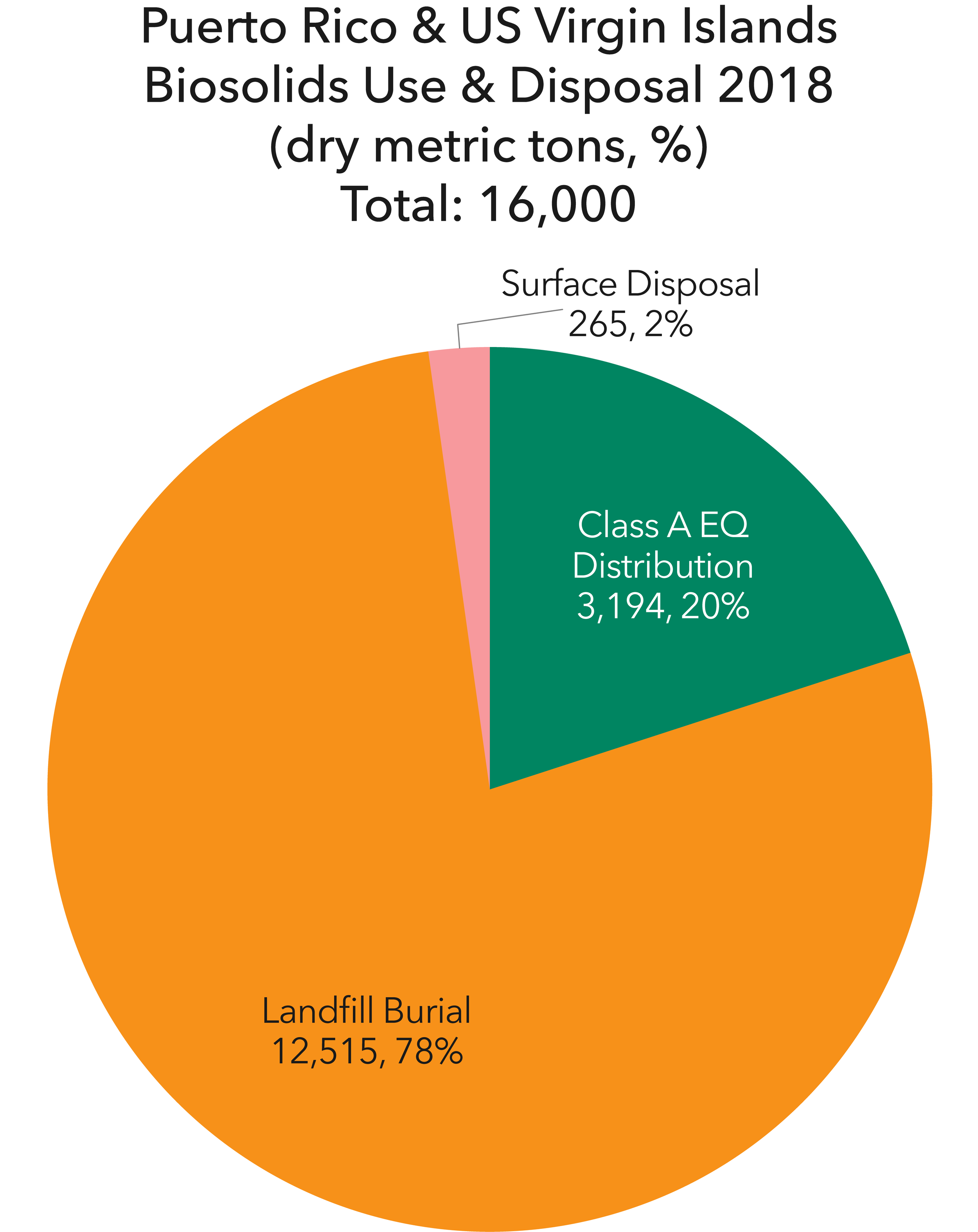Territory Data
Confidence in data for these territories:
MODERATELY HIGH
2018 data unless noted.
Definitions
Terms used on this website and in data sets are defined & discussed here.
Landfill. Photo courtesy of U.S. EPA.
State Statistics Dashboard
Territory Summary
● In these Caribbean island territories, most wastewater solids are landfilled. Puerto Rico has some biosolids composting operations, including a few water resource recovery facilities (WRRFs) and the separate preparer Caribbean Composting, Inc. Due to landfill capacity limitations on the islands and environmental initiatives, there’s interest in moving toward more sustainable, beneficial biosolids management, especially in Puerto Rico.
● As of 2018, no Puerto Rico biosolids are incinerated. Previously, solids from some of the territory’s largest WRRFs (at San Juan, Bayamón, and Carolina) were incinerated at Puerto Nuevo WRRF in San Juan.
● Wastewater treatment for most of Puerto Rico is managed by the Puerto Rico Aqueduct and Sewer Authority (PRASA, or La Autoridad de Acueductos y Alcantarillados, which was founded in 1945 and is a governmental organization that owns and operates water and sewer infrastructure, including ~49 water resource recovery facilities (WRRFs) that treat a combined 200 million gallons per day (MGD). PRASA also operates a biosolids composting plant at Mayaguez.
● In USVI, the Virgin Islands Waste Management Authority (VIWMA) is responsible for the public sewers and WRRFs throughout the islands, as well as the major landfills. Major WRRFs are on St. Thomas (Red Point WRRF) and St. Croix (Anguilla WRRF).
● In 2017, two major hurricanes devastated Puerto Rico, crippling wastewater treatment infrastructures that were already struggling (and sometimes failing) to meet National Pollutant Discharge Elimination System (NPDES) discharge limits and requirements. Basic drinking water service was out for months for more than half the island’s residents, and a third of the wastewater treatment facilities could not function; they were finally restored to basic operations only in spring 2018. By 2022, the U.S. Federal Emergency Management Agency (FEMA) was investing nearly $4 billion to help PRASA rebuild treatment facilities, complete repairs, and build necessary infrastructure throughout the island. The same hurricanes wreaked havoc in USVI.


